What makes a city suitable for to live in?
How can one determine whether or not a city is suitable for human habitation? In this context, the concept of livability rejects the presumptive prerequisites for surviving in the world, such as the need for food, housing, and other basic necessities that are necessary for an individual to flourish physically. In this context, the concept of livability refers to an existential sense of belonging to a community. How involved does one feel they should be in their community? How at ease does a person feel when they are in the company of unknown people? How much faith does a person put in the people and institutions around them?
Defining Social Facts: Social facts are external representations or a group’s collective behavior patterns influence an individual’s conduct. Although everyone expects to participate in these structures throughout the day, they are not the direct product of the individual. Social facts are frequently used to control and enforce social norms. A shared construct limits what a person perceives to be socially acceptable. Emile Durkheim contends that social facts must be witnessed in the real world and cannot be understood through introspection.1 This is because your actions, conventions, and belief systems, all of which are representations, reinforce your social identity. It is critical to distinguish your own worldview and observations because otherwise, your observations will be viewed as testimonies and your arguments will be based on your own experiences. An example of this can be seen the perception of
Consistency and Changes: The idea that some actions in society are deemed normal and others are considered flaws is a function of how adaptable these traits are to the various social circumstances. Rather than discussing whether or not crime is morally acceptable, an excellent illustration of this would be the study of crime in society. According to Durkheim, crimes and their corresponding penalties have existed in every stage of human history.2 Because of this, the concept of crimes is a generic social truth due to their persistent existence and adaptability in day-to-day life regardless of the situation in which you find yourself.
Comparing the first observation to whether or not the conditions of a social fact’s existence have remained constant in the present is a useful way to determine whether or not a social fact is normal. A comparative study of the evolution of bilingual speakers in relation to the rate of migration in Hong Kong over time demonstrates how the dominant language and culture are also changing. This is due to the increasing number of migrants entering Hong Kong and assimilating into the community. As a result, both locals and newcomers must learn to speak each other’s languages in order to coexist. Furthermore, certain cultures blend better with Hong Kong residents than others. Western European customs, according to consensus, are more adaptable to young Hong Kongers than East Asian cultures. This development does not invalidate the social fact; it simply indicates that these social structures are unsuitable for survival in various situations. These are areas that urban designers and architects can investigate because they offer the possibility of future changes and growth in a society that can be investigated. As things stand, it is critical to comprehend a city’s development trajectory and devise strategies to improve it.
MTR ride
Introduction: Have you ever been taking a bus or the train alone across town and felt completely out of place. Feeling incredibly self aware of your place within this tight space and claustrophobic from being awkwardly close to the person next to you. There is a quiet hostility and suspiciousness in the metro, where we have our guards up. When its rush hour everyone packs into the metro, eyeing for any open seats that they have elbow there way to get. When its empty you distance yourself as far away from the next passenger as possible. It reveals the strange experience of human distancing in our everyday lives.


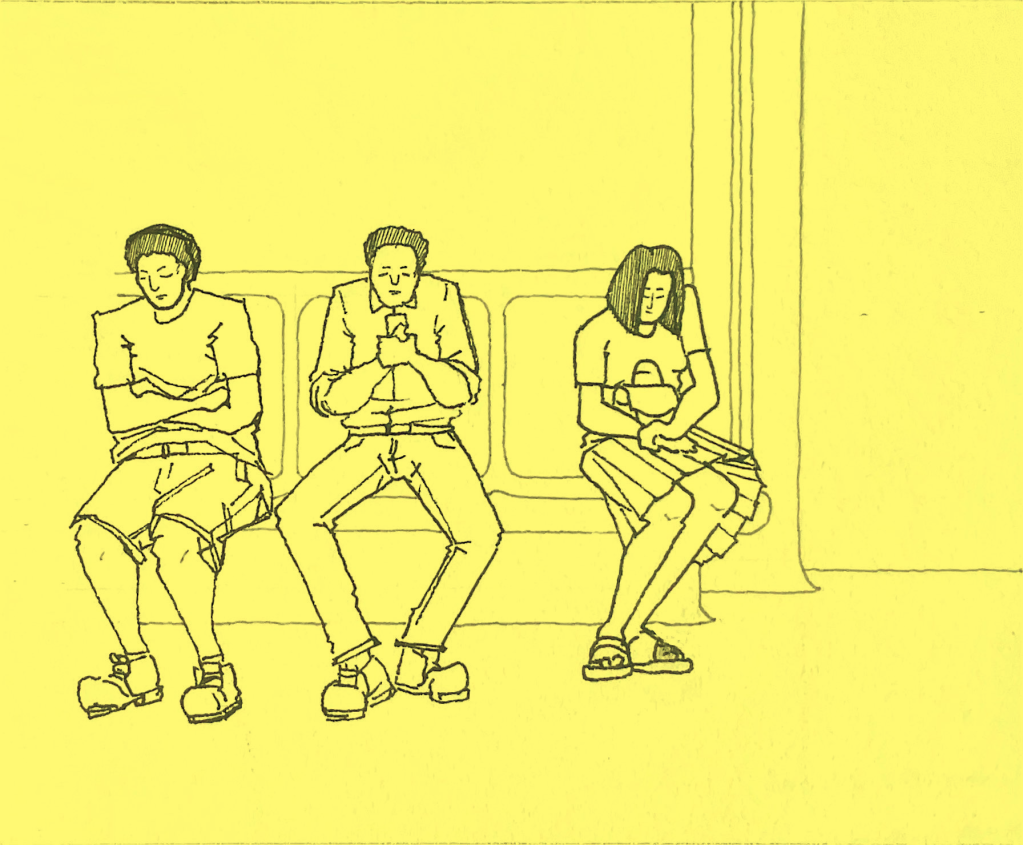
Participant Observation: When riding the subway, I’ve noticed that passengers shift their body slightly to accommodate the person sitting next to them. How should one best position themselves in order to take a seat in the adjacent row? It is fascinating to see people contort themselves in order to keep distances between themselves and their neighbors. This phenomena does not feel like a conscious action being taken by a person but rather like an instinctive reaction to the surroundings being experienced by that individual. Visit the MTR station, choose a seat, and study the behavior of the passengers seated around you. Learn how people carve out space between themselves and others in order to create a distance that they can accept.
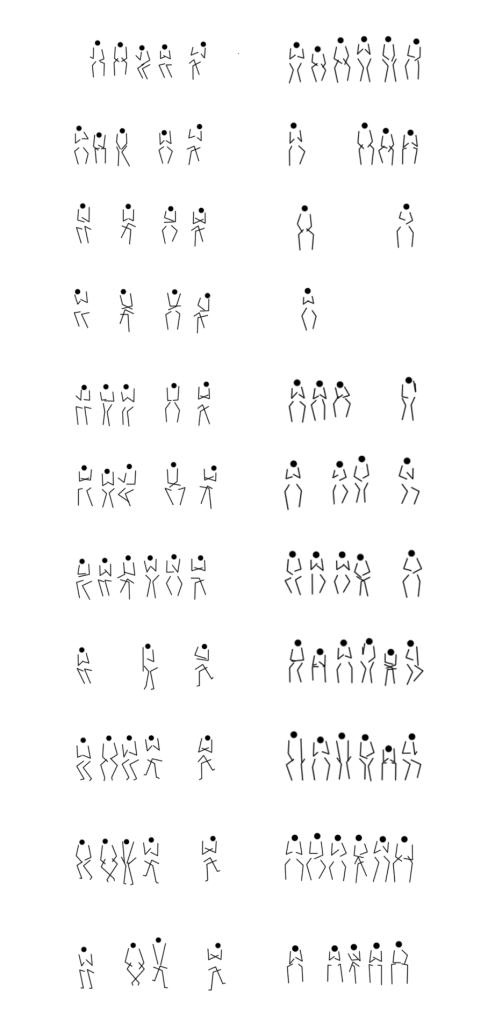
Understanding the Social Field: In this study I mainly isolated the physical behaviors of people in confines of a single bench with 6 seats. Over the course an hour I observed from across bench how people sat down and shifted between MTR stations. Firstly I measured the most basic dimensions of the seat as a reference of scale in my observations. Using the curves and seat padding as markers that tell me how much a person has shifted. Above this is understanding how human behaviour works between different people in a confined space. A specified area that people have to stay for a prolonged period of time. This demonstrates how people adapt and respond physically to create distance of comfort between other people. Can we observe a physical language between people in their posture and body behaviour?
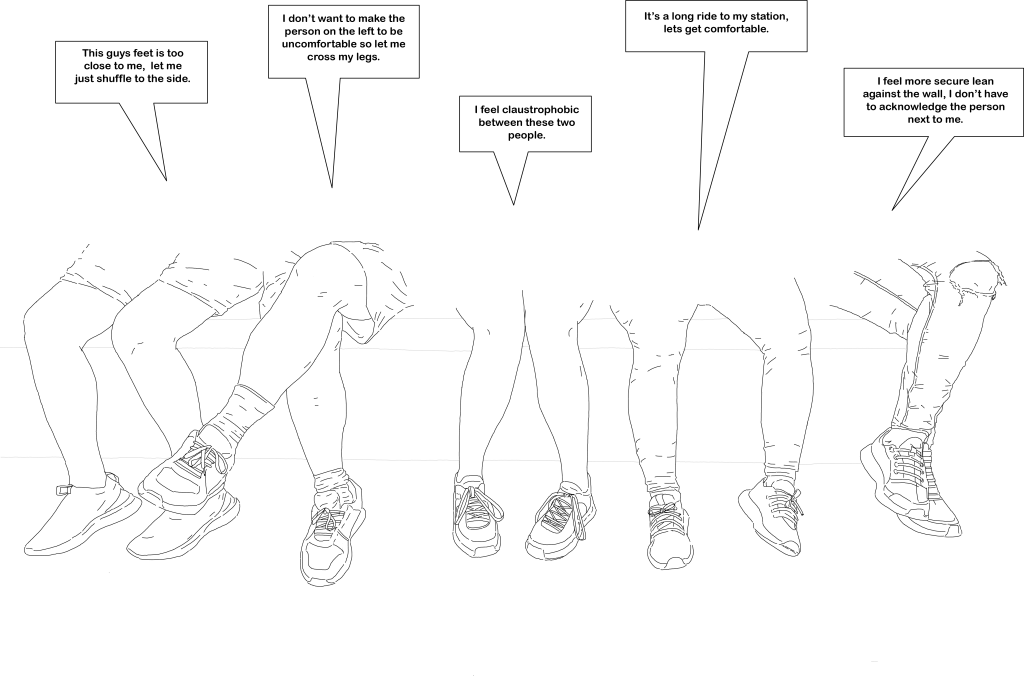
Space x Body Intimacy
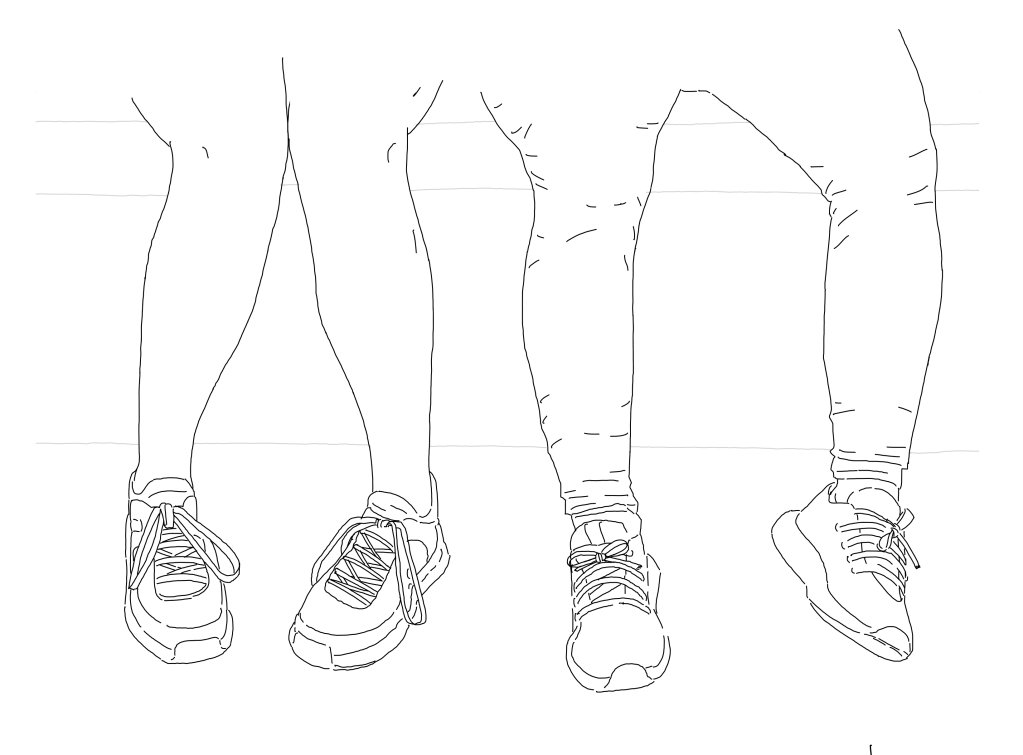
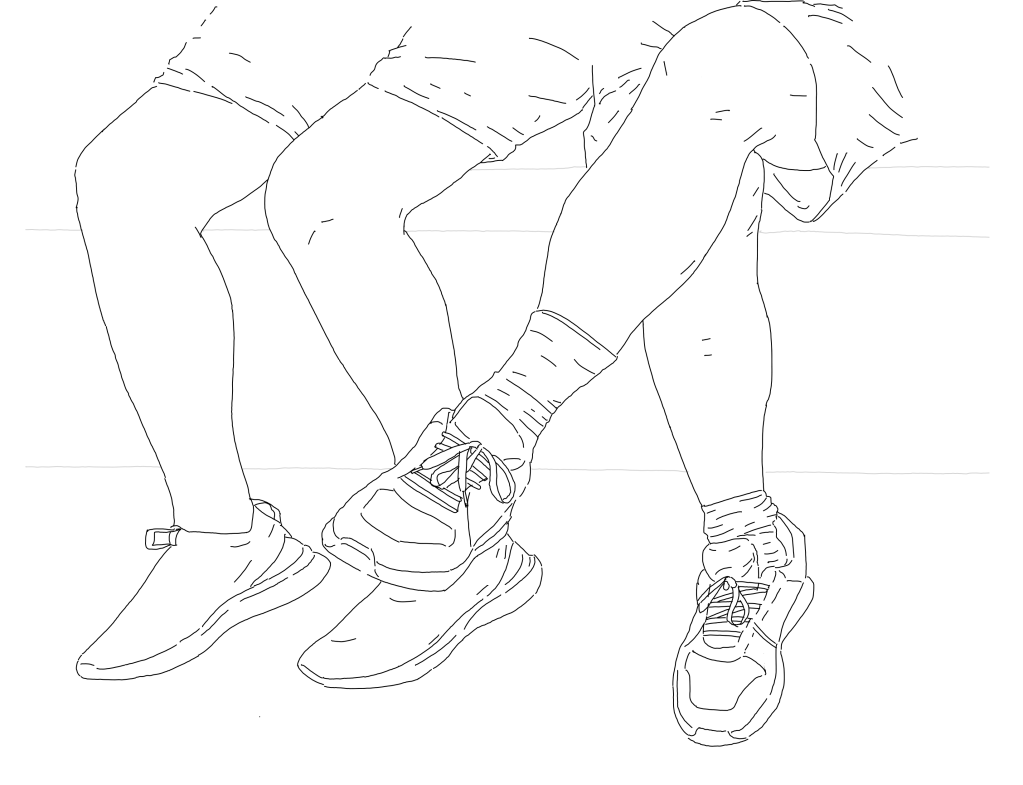
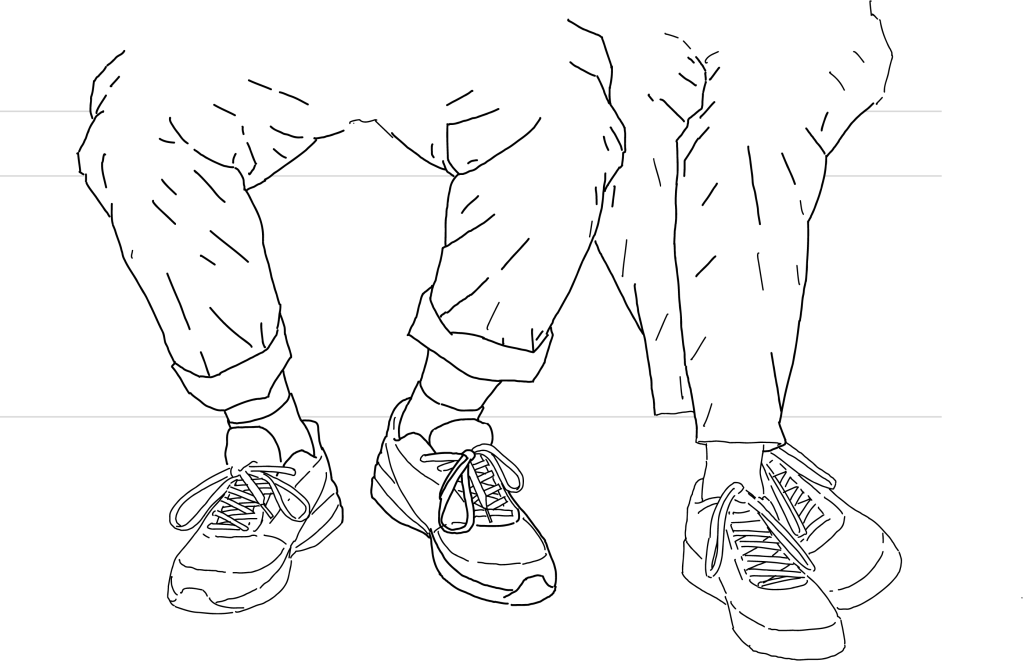
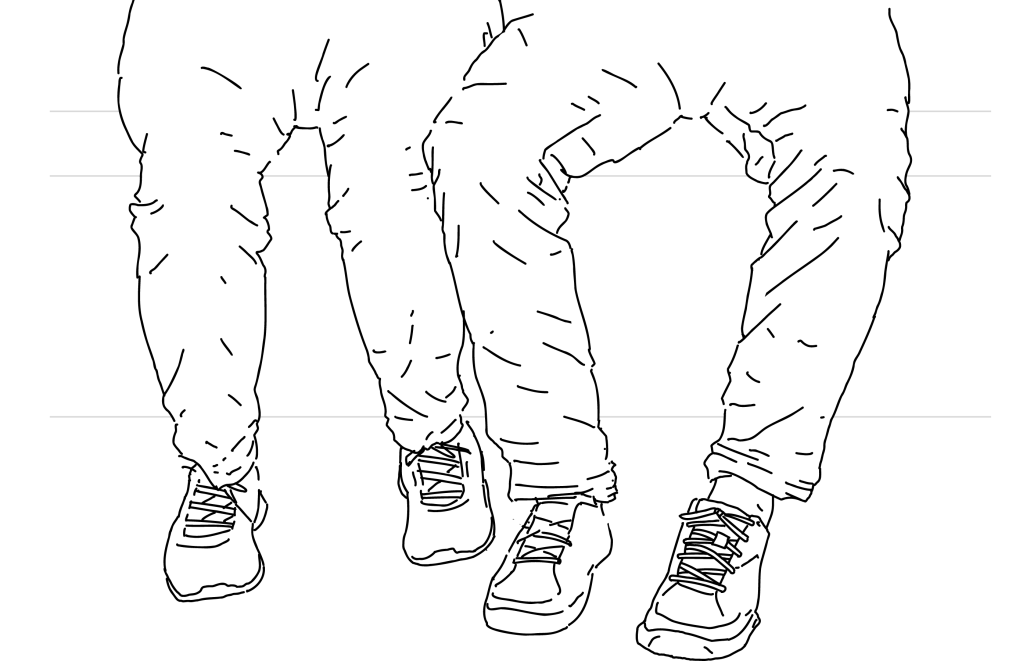
Shoulder to Shoulder Spacing
Understanding the phenomenon of human defined spaces. Humans are spatially sensitive beings that responds to external changes. Through this they also communicate themselves subtly with their reactions and body language.3 Mapping how individuals share and divide space depending on how intimate they are with the neighbors.



